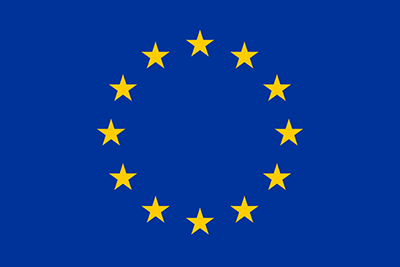
A 4-year EC Funded project
Start date: 1st of June, 2019
HYPERION has received funding from the European Union’s Horizon 2020 research and innovation programme under grant agreement no 821054.
© Copyright 2025 Hyperion Project | All rights reserved | Designed & Developed by zulupixels.com | Privacy Policy | Imprint | Cookies Policy
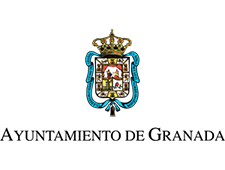 The City Council of Granada (Ayuntamiento de Granada, ADG in what follows) is the institution that is in charge of governing the city and the municipality of Granada, Spain. It is chaired by the Mayor of Granada, who since 1979 is democratically elected by universal suffrage. Francisco Cuenca Rodríguez, from the Spanish Socialist Party, currently holds the title. The head of this organization is located in the Plaza del Carmen, although several municipal institutions are located in the Municipal Administrative Complex of Los Mondragones, on Avenue of Fuerzas Armadas 4.
The City Council of Granada (Ayuntamiento de Granada, ADG in what follows) is the institution that is in charge of governing the city and the municipality of Granada, Spain. It is chaired by the Mayor of Granada, who since 1979 is democratically elected by universal suffrage. Francisco Cuenca Rodríguez, from the Spanish Socialist Party, currently holds the title. The head of this organization is located in the Plaza del Carmen, although several municipal institutions are located in the Municipal Administrative Complex of Los Mondragones, on Avenue of Fuerzas Armadas 4.
ADG has transferred the powers of town planning, and it is autonomous in the decisions regarding planning and maintenance, under the supervision of the cultural authority.
ADG has several architects and engineers for the planning and for the supervision of all type of works in the city. ADG has a section dedicated to CH, the head of this section is Architect Carlos Aguirre, who is part of HYPERION proposal.
WEBSITE: https://www.granada.org/
LOCATION: Plaza del Carmen, 5
ROLE: ADG will provide the raw materials to analyse in WP4, and will be involved in the identification of the deterioration patterns of the different construction eras.
In WP7, ADG will apply the HRAP to two areas of the City of Granada: El Albaicín and El Realejo.
ADG will also participate the WP2 activities for drawing the user requirements, as well as contributing to WP9 and WP10 for dissemination, exploitation and standardization activities.
RELEVANT PROJECTS:
In the execution phase of the 3rd phase of the Royal Quarter of Santo Domingo (Cover and protection of archaeological remains through a singular structure)
Repair of the Aljibe de San Luis (Calle S. Luis),
In the execution phase Reconstruction-Rehabilitation of the Casería de la Trinidad near the Chamber of Commerce ((ethnological catalog)
Various repairs of the Town Hall (accessibility, structural repair, remodeling of spaces for Tourism Office)
Conservation of Albayzín (https://www.granada.org/inet/patrimonio.nsf)
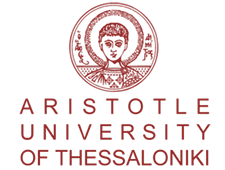
The Laboratory of Heat Transfer and Environmental Engineering (LHTEE) belongs to the Energy Section of the Mechanical Engineering Department of the Aristotle University of Thessaloniki (AUTH). AUTH-LHTEE has been operating since 1990 and since 2006 has been certified according to ISO 9001. Most of its research funds originate from competitive programs of the European Commission. The Laboratory’s research work focuses on the simulation of atmospheric transport phenomena, including the dispersion and the chemical transformation of air pollution, the quantification of exposure and the assessment of adverse effects on human health, materials, the environment and climate. The Laboratory holds significant experience in the application of numerical tools for meteorological and climate modelling able to cover a broad range of spatial and temporal scales, ranging from the local scale in urban areas to the mesoscale and the regional scales. One of the main activities of AUTH – LHTEE is the assessment of the impact of atmospheric forcing and environmental flows on the environment including the assessment of potentially adverse effects of atmospheric phenomena on structures. In addition, AUTH – LHTEE has a long experience in the assessment of the efficiency of technical measures and policies for reducing air pollution levels as well as on the analysis of the impact of industrial activities and major public works on air quality. In this frame, AUTH-LHTEE has contributed to the Euro-CORDEX project by performing regional-scale climate simulations using the WRF model, in order to compare dynamical downscaling results against various observational and reanalysis data sets to evaluate model performance, as well as to study regional climate change in South East Europe, as simulated by modelling groups under the IPCC AR5 emission scenarios. AUTH-LHTEE was a key partner of the EU FP7 MEGAPOLI and TRANSPHORM projects as “Megacities: Emissions, urban, regional and Global Atmospheric POLlution and climate effects, and Integrated tools for assessment and mitigation” and “Transport related Air Pollution and Health impacts – Integrated Methodologies for Assessing Particulate Matter” respectively.
WEBSITE: https://www.auth.gr/
LOCATION: Thessaloniki University Campus
ROLE: AUTH-LHTEE will be responsible for the provision of reliable quantification and mapping of climate and atmospheric impacts for the targeted sites, in connection to the specific categories of threats in CH areas targeted by the project. AUTH -LHTEE will also be responsible for the review of existing climate simulation databases of reanalysis and modelling results including various Climate Change (CC) scenarios and the compilation of a set of homogenised atmospheric input data for the downscaling application. Furthermore, AUTH-LHTEE will utilize a combination of data analysis methods, on the basis of existing data sets, as well as two way coupled multi-scale numerical modelling systems and techniques such as the MEMO, MEMICO and PALM-LES atmospheric models. In addition, it will seek to implement, validate, calibrate and operationally utilize the assimilation of 3-D data from micro-climate stations and smart tags. Finally, it will prepare and deliver a set of appropriate indicators for climate impacts on the CH structures overall in the selected Demonstration Pilot areas in the Pilots, which will also include related hazards assessment.
RELEVANT PROJECTS:
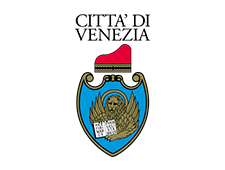
The City of Venice and its lagoon are situated in the Veneto Region of Northeast Italy. Founded in the 5th century AD and spread over 118 small islands, Venice was inscribed on the UNESCO World Heritage List in 1987, in recognition of its unique historical, archaeological, urban and artistic heritage and exceptional cultural traditions, integrated into an extraordinary natural landscape.
In the Venice lagoon, covering around 50.000 km², nature and history have been closely linked. Due to the fragile balance of this environment, the Venice cultural heritage is subject to many threats, as the wave motion (“moto ondoso”) induced by wind and water traffic, the erosion of the lagoon bed, the high level of pollution and salinity and, more and more, the effects of the hazards caused by climate change. Therefore, the City of Venice is in strong need of developing advanced integrated policies and innovative methodologies to protect and maintain its historical centre.
The City of Venice will participate in the HYPERION project through the main Departments in charge of the issues tackled by the project, in order to achieve the set objectives with an integrated approach. The main divisions in charge of the project implementation will be the Public Works Directorate, in particular the Museum Department, and the EU Policies Department.
The Museum Dept. is responsible for the planning, supervision and coordination of all the restoration and maintenance works related to museum and historical sites, as well as for the adaptation of technologies and local regulations to the current legislation in the field. The Museum dept. also takes care of monitoring the conservation status of cultural public assets in order to identify the buildings to be subject to restoration, sometimes funded by private sponsors.
The EU Policies Department manages and supervises all EU funded projects in which the City of Venice (COV) is involved and has a skilled, multilingual and multidisciplinary staff. Since 2000, COV has been involved in more than 150 EU projects both as LP and PP.
WEBSITE: –
LOCATION: Venice, Italy
ROLE: Within the HYPERION project, COV aims at increasing and improving its knowledge and its capacities about historical building restoration technologies, materials deterioration monitoring systems, preventive strategies/measures and resilience and adaptation methodologies. Furthermore, COV intends to concretely test the innovative methodologies and technologies that will be developed within the partnership designing and implementing a pilot project that can be a driver for many other restoration and maintenance interventions in its historical centre.
The HYPERION partnership could benefit from the participation of the City of Venice since it could bring in the project its significant expertise and experience in dealing with a wide range of different issues with an integrated approach. The City of Venice is in fact a unique and very complex territory made of water and land in which many different realities coexist and bring both valuable resources and critical issues: an extraordinary cultural heritage, a very precious and delicate natural environment (the Venice Lagoon), one of the biggest production poles at national level (Porto Marghera), which is now almost entirely abandoned and gravely polluted, and the city mainland.
RELEVANT PROJECTS:
The project foresees the installation of a monitoring system to keep under control the main significant structural parameters for the static behavior of the building. The data processing and evaluation of results will provide essential information to identify and control the damage phenomena, in particular crack patterns, that affect the structures of the temple, taking into account the temperature of the environment, essential to filter the thermal effects from structural data acquired. The analisis of the collected data, and in particular their variations over the time, will also provide useful information to better define the behavioral changes of the structure and to detect the presence or insurgence of damage phenomena or structural deterioration. This monitoring system can be very useful for the development of the methodology that will be used with HYPERION.
The Murano Glass Museum is one of the 12 museums belonging to the Venice Civic Museums Foundation. The enlargement, with the recovery of a part of the former “Conterie” and the restyling has been made possible thanks to combined backing from the European Union’s Fund for Regional Development assigned to the Veneto Region (as part of the “POR CRO FESR Veneto 2007-2013”) and to the fundamental intervention of the Venice Municipality, which was responsible for the first phase of the project in collaboration with the Civic Museum Foundation’s Technical Offices.
The exhibition spaces have been almost doubled, the layout totally renewed, there are also new conveniences for the public, the building has been made disabled friendly, two lifts have been added and it is now possible to display part of the holdings hitherto in storage, and also arrange events linked to modern creativity, with a fascinating and unexpected dialogue between contemporary settings and antique rooms.
The project has involved both the historic rooms of Palazzo Giustinian (in which the museum has been located since 1861), and a part of the former glass beads factory next to the museum’s garden.
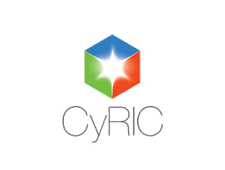
CyRIC – Cyprus Research & Innovation Center Ltd (www.cyric.eu), is a pioneering Cyprus-based company aiming to become a regional landmark of research, innovation and entrepreneurship. CyRIC provides professional Innovation and Research and Development services to both local and international customers specializing in the fields of product design, engineering and prototyping, electronics design, robotics and software development. Moreover, a number of specialized consultancy and entrepreneurship services are offered to start-ups and SMEs helping them develop new innovative products, establish and expand their business and acquire funding and investments.CyRIC is the first Business Innovation Center (EU|BIC) in Cyprus, certified by the European Business Network (EBN) validating the range and quality of the innovation services provided to local SMEs as well as the incubation services (technical and business support) provided to start-ups.
WEBSITE: https://www.cyric.eu/
LOCATION: 72, 28th October Avenue – Office 301, Nicosia, Cyprus
ROLE: CyRIC’s main role within the projectis is related to the development of the Middleware and Data Fusion Services, as well as to the on-site Integration and Demonstration Activities.
RELEVANT PROJECTS:
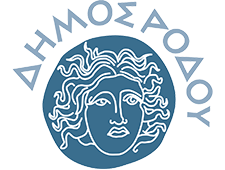
The island of Rhodes/ Greece is situated at the SE of the Aegean Sea. The island occupies an area of approximately 1,400 square kilometers and has an actual population of 116.000 people. Since the 2011 local government reform, Rhodes Municipality refers to the whole island.The city of Rhodes has a history of 2400 years. The different people who settled in the island left their mark in all aspects of the island’s culture: art, language, architecture. The Medieval city of Rhodes, built by the Knights of St. John, is one of the best preserved Medieval Cities in Europe and a UNESCO World Heritage Site since 1988. The cultural heritage of the island is one of its major comparative advantages with historic buildings -complexes and archaeological grounds located all over the island.Rhodes is a popular international tourist destination. The economy of the island is tourist-oriented. Almost 75% of the active population is engaged in the tertiary sector and tourism.Rhodes’s strategy is primarily based on the promotion of the sustainable development of the area. Therefore, the municipality is actively engaged in the HABITAT Agenda as well as Local Agenda 21. Furthermore the municipality became a signatory to the Covenant of Mayors in January 2010 making a commitment to achieve the EU target of 20% of reduction of CO2 emissions. Information and Communication Technology (ICT) is one of the most important challenges to implement for Rhodes. The municipality aims for improvement of services through the use of information technology in the public sectors.The municipality consists of 19 departments and several departments and occupies almost 1000 employees. Basic competence of the municipality is forming policies for the economic, social and -cultural development of the area and making all the major decisions for their implementation The mayor, upholds local interests, determines the actions of the municipality regarding the implementation of local policies and development plans and ensures the unity of the local community. The Planning & Development Department of the Municipality has participated successfully in a number of projects within the framework of Community programmes and initiatives.
WEBSITE: https://www.rhodes.gr/
LOCATION: ELEFTHERIAS SQ.1, RHODES 85131, GREECE
ROLE: The Municipality of Rhodes is expected to support actions for the implementation and communication of selected project results and their evaluation, as well as to provide user requirements during the first planning phase.
RELEVANT PROJECTS:

The Ephorate of Antiquities of the Dodecanese is based in Rhodes and has jurisdiction over the regional unity of the Dodecanese. Since its foundation in 1948, just after the incorporation of the Dodecanese in Greece, the Ephorate has had a multifaceted activity, which concerns primarily the protection and safekeeping of ancient, byzantine and medieval sites and monuments, through the declaration of protected archaeological sites and monuments and the continuous control of all interventions on them, as well as on their immediate physical environment. Among the measures aiming to the protection and promotion of archaeological sites and monuments, are rescues excavations, which brought to light ancient and medieval settlements and monuments of particular archaeological and cultural importance, such as the ones proposed for the project.
Another fundamental aim of the Ephorate is the presentation and promotion of the archaeological sites and monuments in Rhodes and the other islands of the Dodecanese, even the most remote ones, such as Kastellorizo and Ros. In the course of past two decades, big projects have been planned and implemented, concerning restoration, conservation and rehabilitation works in often visited archaeological sites and monuments, but also on individual monuments, which are less known to the public but of great archaeological and cultural importance.
An important part of Ephorate’s activity is the foundation and maintenance of new museums in many islands of the Dodecanes and the organization of new exhibitions in already existing museums. Furthermore, the Ephorate has participated in many exhibitions organized by Greek and foreign museums.
Moreover, the Ephorate has accomplished important scientific research, by participating in research programs and systematic excavations in collaboration with Greek and foreign Universities, by organizing congresses and educational programs and by editing academic publications.
WEBSITE: https://www.culture.gr/en/ministry/SitePages/viewyphresia.aspx?iID=1705
LOCATION: Dodecanese, Greece
ROLE: EFADOD will specify the monuments to be included in the specific project for the case study in Rhodes, as well as to aid in the initial installation of data-collecting sensors and monitor subsequent operation and applications of the above project. EFADOD will also participate to WP2 mostly for setting up the user requirements, as well as to the dissemination, communication and exploitation activities of the project.
RELEVANT PROJECTS:
Restoration and Functional Improvement of the Holy Monastery of the Apocalypse
The rehabilitation of the building complex of the Holy Monastery of the Apocalypse was originally included in the 2nd CSF (1999-2001) and from the December 2010 in the NSRF (South Aegean Operational Program). The work, which began in July 2011, restored complete structural and building integrity to the complex and in parallel upgraded it as a modern monastic spiritual center.
Restoration and Presentation Enhancement of the archeological site of Kamiros
The project was implemented in the context of the NSRF in the years 2011-2015. The total budget was 1.200.000,00 euros. The following works were carried out: Construction of new public facilities (W.C., cafeteria, guard house, offices), formation of pathways leading to all points of interest of the site, consolidation and restoration works in the ancient walls, coating of the “floors” inside the ancient houses with a mixture of gravel and sand in order to eliminate the natural vegetation, installation of a drainage system in order to prevent the damages caused by rain water, leveling with beaten earth and log barriers of the eroded ground in the area of the acropolis etc.
Consolidation and enhancement of ancient settlement at Chorio, Chalke
In the framework of the Operational Program for Crete and the Aegean Islands (NSRF 2007-2013) the following works were carried out in the ancient settlement extending below the Hospitaller castle: paving of the central path leading to the castle, as well as of the walkways inside the settlement and the castle, restoration or consolidation of ancient retaining and fortification walls, drawing/maping of the ancient remains.
Restoration and enhancement of medieval monuments at Chorio, Chalke.
In parallel to the above mentioned project the following works were carried out on the medieval monuments at Chorio: Reconstruction of the church of St. Nikolas and conservation of its wall-paintings and mosaic floors, restoration of the fortification walls and of the north tower of the Medieval castle.
ARCHI-MED project
ARCHI-MED is a prototypical experimental action for international cooperation in spatial planning in the central and east Mediterranean region, according to Article 10 of the regulations of European Fund for Regional Development. Planning began in 1996 and implementation took place between January 1999 and December 2001. Greece and Italy participated in the program by jointly submitting a common strategy for the region concerned, aiming to gather the required technological expertise and experience in special planning and to reinforce cooperation between their central administration and regional governmental bodies. Date: 01/12/1999-31/12/2001.

Finnish Meteorological Institute (FMI) is a research institute producing weather, air quality and physical marine services. There are about 674 employees. Besides people who have studied meteorology at university, the Institute’s personnel include chemists, physicists, mathematicians and engineers. FMI measures and manages data on the physical state and chemical composition of the atmosphere and the seas, and also on climate. FMI conducts meteorological research, physical oceanography, research into the polar regions, space research, air quality research in distance scales from a few meters to global scale, and other research closely linked to the field; and also develops and maintains new measurement and modelling techniques. FMI activities are directed to meet the needs of public safety, transport, businesses and people in various environments.
Regarding the HYPERION project, FMI access and knowledge base on climate data are relevant, as well as the supercomputing environment accessible at FMI. capacity of which is provided by CSC Oy.
The dispersion modelling group (~30 researchers), led by Adj. Prof. Ari Karppinen, is involved in modelling of atmospheric composition from micro to global scales. The group develops and evaluates the full range of air pollution dispersion, exposure, and emission models, and also other meteorological and mathematical modelling techniques such as CFD/LES modelling (PALM). The models are continuously developed, used and evaluated in international and national research projects as well as also used for operational air pollution forecasting for global, regional and urban scales.
WEBSITE: https://en.ilmatieteenlaitos.fi/
LOCATION: Helsinki, Finland
ROLE: In the HYPERION project framework, the FMI team
will be choosing the worst possible episodic situation weather data (considering Cultural Heritage site protection) from a climate data base for the years 1980-2100. The data will then be downscaled for the chosen CH sites using computational fluid dynamics modelling with the Large Eddy Simulation method.
RELEVANT PROJECTS:
EU/PANOPTIS – Downscaling of climate data for episodic weather situations relevant to Road Infrastructures.
The FMI team participates in the development of the computational fluid dynamics model PALM, based on the Large Eddy Simulation (LES) method.

The Institute of Communications and Computer Systems (ICCS) is a non-profit academic research body established in 1989 by the Greek Ministry of Education to carry out research and development activities in the area of telecommunications, systems and techniques, computer systems and their applications in transceivers, radar, electromagnetic sensors, satellite and wireless communications, electromagnetic phenomena modelling, neural networks, systems, software and hardware engineering, telematics and multimedia applications, transport applications, control systems, biomedical engineering and electric power. It is closely associated with the School of Electrical and Computer Engineering (SECE) of the National Technical University of Athens (NTUA) (est. 1837), which is the oldest and most prestigious academic institute in Greece. Within ICCS, the I-SENSE Group is very active in areas dealing with embedded systems and sensor networks, Intelligent Transportation Systems, wearables and IoT applications for improved transport and mobility, innovative and secure middleware/Platform as a Service (PaaS) solutions for many application domains (environment, logistics, structural health monitoring and security), exploitation of remote sensing, in-situ data and crowd-sourced data for environmental parameters’ monitoring. The I-SENSE Group comprises more than 70 personnel members (Professors, post-doctoral researchers, post-graduate researchers, and administrative staff).
WEBSITE: https://i-sense.iccs.gr/
LOCATION: 9, Iroon Polytechniou Str., Zografou 157 73, Athens, Greece
ROLE: In HYPERION, the I-SENSE Group is the Project Coordinator as well as the Leader of WP2 – Communities of Practices (CoP), End-User Requirements and Platform Design.
RELEVANT PROJECTS:
Thw I-SENSE Group has coordinated and participated in numerous research and development activities in the framework of both European and national projects. Indicatively, the following projects are worth mentioning: in H2020, RESIST (coordinator), SCENT (coordinator, system integration and architecture), PLUGGY (coordinator), SENSKIN (coordinator, system integration and architecture), SAFERtec (coordinator), IN-PREP (coordinator), PASSME (Wearables and IoT for passenger mobility, smart localization, technical manager); in FP7, VR-Hyperspace, GAME-ABLING, ManuVAR, AutoNet2030 (coordinator), AdaptIVe, Use-It-Wisely, CityMobil2, TEAM, MOBiNET, INACHUS (coordinator), RECONASS (coordinator).
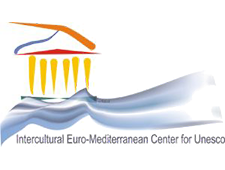
The Intercultural Euro-Mediterranean Centre for UNESCO is a non Profit. non Governmental Organization whose objectives are: The cultivation and the development of friendship and cooperation between the members in the Societies of this Association and generally between the people of all the regions in the entity of European, Middle East, North African, Black Sea and Mediterranean areas, united under their diversities, aiming at the moral and material promotion of the peoples of all European, Mediterranean , Middle East, North African and Black Sea countries, at the securing of Peace, of Democracy as well as the respect and promotion of Human Rights and Freedom in the areas, the Family protection, the Equality of sexes, the protection of Women and Children, the Environmental protection, the promotion of the Principle of “ Education for All”, the promotion of Information and Communication, the Research and Quest of programs Aiming at the Promotion of New Natural Resources, Energy issues (as the water issue). Also, the promotion of fruitful diversities of Cultures protecting the diversity of cultural expression, the Encouragement and Cooperation on issues of Cross-Cultural Strategies and activities of Mutual Cultural Exchanges, the Protection of World Heritage Monuments.
WEBSITE: http://www.iemc-unesco.org
LOCATION: Athens, Greece
ROLE: IEMC will be the WP9 leader, responsible for the dissemination and communication activities of the project. IEMC will also participate to the WP2 activities, contributing to the end-users’ requirements and best practices, while also leading the Task10.3 for the organisation of the consensus building workshop.
RELEVANT PROJECTS:
ARCHIMEDIS III, ‘Development of an integrated electronic wearable system for measuring and wireless transmission of biological signals biological signals – ESTHIS’(2012-2015)
FP7, SENS-ERA ‘Strengthening sensor research links between the Georgian Technical University and the European Research Area’ (2011-2013)
Thales, IndrAQ, ‘Multidisciplinary study of air quality with emphasis indoors’ (2012-2015)
FP7, SECURE R2I, “ICT; Security; Nanosciences, Nanotechnologies, Materials(NMP)” (2013-2016)

Iuav University of Venice was established in 1926 as one of the first Architecture Schools in Italy. It is an architecture-themed university essentially focusing on the teaching, research and practice in the design, conservation and restoration of living spaces and environments, at different scales: buildings, cities, landscapes and territory. Among other things, Iuav also has a Schools of excellence, a PhD school and a highly-equipped system of ten laboratories managed by specialists and experts of different scientific fields. Among these laboratories there is LAMA – Laboratory for Analysing Materials of Ancient origin, which was established in 1994. The LAMA’s permanent staff is composed by geologists, chemists, one natural scientist, one physicist and one architect. The Scientific Director is Prof. Fabrizio Antonelli, geologist. The three main research areas of the laboratory concern (i) the mineralogical-petrographic and chemical-physical analyses of architectural stones and marbles, bricks, mortars, plasters and glass used in historical buildings and artistic contexts, as well as the determination of the phenomena which cause the deterioration of all these materials; (ii) the archaeometric studies aimed to identify the provenance and production or processing technologies of stone, lithoid, ceramic and glass materials found in archaeological sites or conserved in museum collections; (iii) organic and inorganic products for the conservation of stone and lithic materials as well as painted and decorated surfaces.
WEBSITE: http://www.iuav.it/lama
LOCATION: Palazzo Badoer, Calle della Laca, San Polo 2468/B, I-30125 Venice (Italy)
ROLE: due to the high knowledge in petrographic characterization and in deterioration forms and mechanisms of building and decorative stones and materials of the LAMA’s staff, IUAV is Task leader for task 4.1 “Identification, classification and characterization of the building materials” and T4.3 – “Deterioration of physical- mechanical properties of the building materials under accelerated decay conditions”. Iuav will contribute to fully characterize the building materials of the Venetian case study, and also to the other cases selected for the project. More in general, Iuav/LAMA will contribute – together with the Padua University team – to the accomplishment of many other Tasks included in WP number 4 and 5 (4.1-4.5) (5.2, 5.3, 5.5, 5.6). An horizontal participation in all of the activities of the project will also be assured.
RELEVANT PROJECTS: LAMA’s work and activity has been reworded with substantial volume of funding by the Italian National Research Council in the framework of the so-called “Cultural Heritage Project”. Within this context it in 1998-99 the laboratory began a program of study of several marbles used in antiquity, including Verde Antico, also known as Thessalian marble (Greece) and Verde di Tinos (Greece). Successively, it participated in the Italian National Research Council Cultural Heritage Projects dedicated to characterizing the brick used in Venice over the centuries and to the Arsenal in Venice. LAMA/Iuav took part also in the international collaborative project called Let’s Care Method (Landscape Environment Assessment and Cultural Heritage Restoration), with research centres in Italy and abroad, which focused on a section of the lithostroton of the Basilica of S. Maria Assunta on the island of Torcello. Within the “Sixth Framework Programme” of the European Commission (Research area: INCO-2003-B2.1 Materials, artifacts, monuments and sites: new technologies and characterization), LAMA/Iuav participated from 2005 up 2008 in the “QuarryScape Project: conservation of ancient stone quarry landscapes in Eastern Mediterreanean”, and, from 2006 up to 2009 in the “MEDISTONE project: preservation of ancient MEDIterranean sites in terms of their ornamental and building STONE: from determining stone provenance to proposing conservation/restoration techniques”. Currently, another international scientific program is being carried out jointly with foreign scholars of the Polish and Turkish academies concerns the characterization of white Microasiatic marbles used in antiquity. The aim is to improve the petrographic-isotopic data bank used for the recognition of marble items present at archaeological sites and in museums.
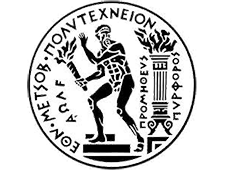
The National Technical University of Athens (NTUA), is the oldest (founded in 1837) and most prestigious Engineering University in Greece with a large involvement and participation in research projects both in a National and European level. NTUA has been ranked at the 10th position among all the European Universities in terms of research funded by the EU and at the 17th position among all the research centres in Europe. In HYPERION, the following four labs are involved: (1) Laboratory of Photogrammetry, Signal Processing & Computer Vision, (2) Soil Mechanics Laboratory, (3) Institute of Steel Structures, (4) the Remote Sensing Laboratory
WEBSITE: http://www.ntua.gr
LOCATION: Athens, Greece
ROLE: The Lab. of Photogrammetry, Signal Processing & Computer Vision (P-SP-CV Lab.) will be responsible for image processing and analysis of the transport/civil infrastructure data. The group will apply novel machine learning techniques through the exploitation of deep learning, tensor based learning and online clustering. The group will be also involved analysis in the photogrammetry and 3D reconstruction research due to its expertise as photogrammetry team. The Remote Sensing Lab. (RSLab.) will be responsible for satellite monitoring and especially for assessing a) land deformation using differential interferometric time series techniques, b)land cover changes using multispectral imagery and CNN techniques, and c)floods using SAR imagery in the pilot areas. It is the lead partner of WP6 “Earth Observation, Sensor Data and Geospatial Services for increased resilience of the RI”, and especially of the tasks 6.1 (Development of a conceptual framework for routine CH-assets monitoring using vehicle- and drone-based sensors, coupled with satellite observation), 6.2 (Development of satellite and drone monitoring capability), and 6.3 (Multi-sensor flaw and degradation assessment). The Soil Mechanics Lab will contribute to Tasks 2.5 (definition of assets, networks, interconnections and interdependences) and 5.3 (development of vulnerability modules). The group will focus on the modelling and assessment of slope stability, rammed earth structure vulnerability, and foundation integrity, while also undertaking the modeling of soil-foundation-structure dynamic interaction for bridges, buildings and pipe networks, especially where soft and/or liquefiable soils are present. NTUA’s structural group (ISS) will contribute in WP2, task 2.5 (definition of assets, networks, interconnections and interdependences), WP5 in tasks 5.2 (development of detailed vulnerability assessment tools and interfaces for the SG simulator), 5.3 (development of vulnerability modules), 5.4 (resilience framework and engine), 5.5 (socioeconomic, community and organizational resilience framework/engine ) and 5.6 (holistic impact assessment and mitigation tools for CH assets), and WP7, task 7.1 (development of the integrated HRAP Platform). Detailed and simplified surrogate models will be formed and validated while software will be developed to (i) enable the use of parallel computing for the propagation of uncertainty and the determination of system risk (ii) assess the resilience of the CH area under multiple hazard.
RELEVANT PROJECTS:

OsloMet is Norway’s third largest university and one of the leading institutions for studying civil engineering in Norway. The Faculty of Technology, Art and Design is the leading unit of Norway for multidisciplinary research and teaching in the built environment and offers higher education and research and development activities within engineering, arts and design.
WEBSITE: https://www.oslomet.no
LOCATION: Oslo, Norway
ROLE: The Oslo Metropolitan University – OsloMet will develop the novel Hygrothermal (HT) Simulation Tool for predicting the HT performance of cultural heritage (CH) sites and monuments under climate change risk scenarios. It will undertake the characterization and laboratory testing particularly of wood, developing material and structural models for CH timber structures as well as any ancillary non-CH steel structures (i.e., small bridges, telecom and power transmission towers). OsloMet will be responsible to integrate all heat, air and moisture properties, as measured in all four HYPERION project pilots, with the HT simulator and create the respective database. Several CC risk scenarios will be integrated with the simulator, allowing a realistic prediction of HT performance of building components and constructions in CH sites. OsloMet will also be the leading partner of Work Package 5 (WP5) – “Vulnerability and Resilience Assessment of the historic areas” which will provide simplified surrogate models for rapid n-RT postevent reassessment, implement in software flow-state vulnerability modules and provide the framework to enable information flow from hazard to component state and system risk/resilience. In particular, OsloMet will undertake all Tier 1-2 modelling and analysis of CH assets, including structural/nonstructural/ content components focusing on timber and stone masonry buildings.
RELEVANT PROJECTS:
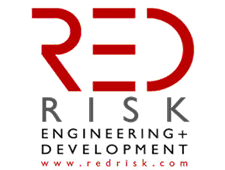
RED, Risk Engineering + Development, is a limited liability company that offers highly specialized consulting services in the field of risk assessment for natural and man-made disasters. RED was initiated in 2008, under the registered name of EQCO Srl. During that period EQCO engaged in international technical consultancy, as well as research and feasibility studies in the fields of earthquake engineering and engineering seismology. As a result of an increased commitment to the field of risk assessment, EQCO was reincorporated in 2012 as RED, a transition that increased its range of services to include natural and human-induced hazard and risk assessment, with a particular focus on the development of catastrophe loss estimation models that cover all major natural hazards Earthquake, Extreme Rainfall, Landslides, Drought, Flood, Tropycal Cyclone perils. RED supports the management of the economic costs of natural hazards, the development of innovative financial tools and strategies to increase financial resilience. RED highly competent staff offers internationally recognized experience in this field, with past disaster risk finance consultancies at urban, regional and national scales, and for all sort of applications.
WEBSITE: https://www.redrisk.com/
LOCATION: Via Frank 38, 27100 Pavia, Italy
ROLE: In HYPERION, RED will be the leader of the team involved in the definition of the exposure (assets-at-risk) for the four cultural heritage sites. RED Team will also implement the seismic hazard assessment for the 4 pilot study areas and will be involved in the design of financial mitigation tools that could be used to enhance the resilience of each of the pilot study sites.
RELEVANT PROJECTS:
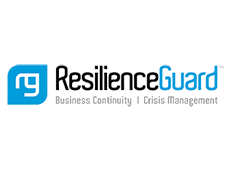
Resilience Guard GmbH is a boutique consultancy company offering professional services and training related to Business Continuity Management, Resilience Management, Crisis Management, Risk Management & Business Assurance, across Europe. RG having acquired many years of expertise in the area of Resiliency for both organizations as well as municipalities and governments, will bring all the practical knowledge and application of resiliency approaches so as to ensure great applicability of the proposed solutions.
RG’s business and research focus has been to continuously find innovative methods to measure Resiliency Maturity for organisations through a matrix that assesses Structure, Systems and Strategy of an organisation against a 5-scale grade, that helps to get a much better understanding of the opportunities for improvement, creating at the same time the proper roadmap in order to facilitate, actions, investments and management commitment.
Resilience Guard is a trusted partner of UNISDR since 2013 where we participate as an active member to their ARISE group, supporting Business Continuity and Resiliency Initiatives worldwide by providing expertise as needed.
Members of the managerial team, have been nominated as Global Business Continuity Manager of the Year 2012 and 2014 by the Business Continuity Institute UK, for the innovative ideas, the budget usage efficiency and awareness level created to all our interested parties, including not just the employees of an organisation but the surrounding community as well, so as to infuse and facilitate a community based response model towards better preparedness against unforeseen situation impacting business as usual.
WEBSITE: https://www.resilienceguard.ch/
LOCATION: Zürcherstrasse 37d
CH-8852 Altendorf
Schweiz
ROLE: RG will be actively supporting, planning and implementing the information gathering activities, based on questionnaires and interviews while assessing and assess the relevant good practices, standards and regulations such as ISO22301, ISO22313, ISO22316, Disaster Recovery Institute (DRI) Professional Practices, sector regulations, GDPR, and will also coordinating and implementing the filtering all the information gathered against a backdrop of prioritization scale/hierarchical classification deriving from aspects such as geographic data, vulnerability and risk maps and showcase the required critical dependencies. Within the context of WP5, RG will take care of the existing planning towards achieving BC objectives, using agile adaptation methodology, focusing mostly on impact and the timely recovery of the critical services as well as the supply chain becoming more robust in order to increase the overall resilience.
RG will also be spotting any alternative solutions needed for a back to business state as soon as practical, while through the Business Impact Analysis will also come up with the potential impact per critical process in case of a disruption, touching upon all important aspects (financial, operational, regulatory etc.) and prepare a Resiliency Maturity Matrix Model for the organisations, based on practices deriving from ISO22361, UNISDR and NATO.
RG will additionally design and draft the required Business Continuity Plans per case (as identified within the strategy document) based on ISO 22301:2012 as well as the ISO22301:2018, including adaptation framework supported by the HRAP platform. For WP7, so as to facilitate better decision making of the HRAP. For the WP9, RG will summarize all the gathered and existing information in order to prepare a thorough report on Standards and Liaison activities with the other relevant organizations. RG as a leader of the WP10, will have the responsibility to properly oversee and steer the implementation of the BP, while also actively supporting and coordinating the delivery of the workshops needed, and strongly support the Route to Market activities of the group.
RELEVANT PROJECTS:
– Support cities through UNISDR participation in activities relating to Resilience. As Resilience guard is a member of the ARISE Group of UNISDR (https://www.preventionweb.net/) where we focus on the top 5 commitments towards Disaster Risk Reduction and Resilience:
– Actively plan and design framework for /nationwide resilience as NATO Experts, supporting the development and implementation of the 7 National Baseline Requirements for Resiliency regarding Civil Preparedness:
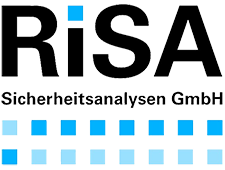
RISA Sicherheitsanalysen GmbH (RISA Safety Analysis Ltd) – an SME – has been founded in 1990 from a research group at the Technical University of Berlin. Since then the initial field of activities has expanded from probabilistic safety, risk and reliability analysis (including human reliability analysis), mainly for nuclear energy plants, to such analyses and also to complex information system applications, decision analysis/support Tools, optimisation and data analysis for various other industries and engineering offices (e.g., RISA’s clients include the railway, automotive and aviation transportation industries).
RISA offers its clients full service including complete system analysis with the necessary software, special software adaptation, mathematical and statistical methods development and supply and installation of the accompanying hardware and software.
RISA management expects a strong future need for risk analyses, information systems and decision analysis/support Tools in technical areas with big potential for hazards. Accordingly, the company has been a partner in eight EC funded projects on probabilistic structural reliability and/or decision support. In these projects, RISA was in charge of the assessment of the time-dependent, probabilistic, structural reliability and/or decision analysis/support.
RISA’s vision is to transfer its expertise to adjacent domains that can benefit from its experience in addressing large scale and complex data management problems. Through its large collaborator network and extensive market survey, RISA is convinced that the domain of safety and security is quite appealing both in terms of potential but most importantly in terms of the effort needed to address it. RISA’s business-making framework matches enterprise-level requirements with strict standardization processes and clear-cut operations. It is under that light that we feel even more comfortable with entering the world of resilience, as our disciplined approach in technology development and consultancy will be a good match to the critical resilience services domain.
WEBSITE: http://www.risa.eu/
LOCATION: Xantener Straße 11
10707 Berlin-Wilmersdorf
ROLE: RISA is the WP7 leader and the main responsible for the software implemention of HRAP. RISA will also develop the visualisation environment for the project (Task 7.5), while having very extensive role in the system architecture (through HRAP) and the overall system integration (WP8 activities).
RELEVANT PROJECTS:
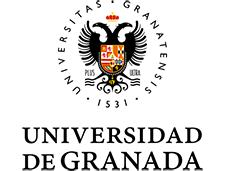
The University of Granada (UGR), founded in 1531, is one of the largest and most important universities in Spain. It serves more than 80000 students per year, including many foreign students, as UGR is the leader host institution in the Erasmus program. UGR, featuring 3500 professors and more than 2000 auxiliary personnel, offers a total of 89 degrees through its 124 departments and 27 centers.
UGR is also a leading institution in research, located in the top 5/10 of Spanish universities by a variety of ranking criteria, such as national R&D projects, fellowships awarded, publications, or international funding. UGR is one of the few Spanish Universities listed in the Shanghai Top 500 ranking (http://www.arwu.org/), in which its Engineering/Technology and Computer Science Faculty is positioned at the top of the 50 best universities of the world. It is also well recognized for its web presence (http://www.4icu.org/top200/). Additionally, the UGR is among the 201-300 first universities of the world and among the 3 first Spanish universities in the Academic Ranking of World Universities (ARWU). Specialties at UGR that stand out are Mathematics (among 101-150 position) and Computer Sciences (position 45), in which UGR has 4 researchers at the top of the Highly Cited Researchers list.
Internationally, we bet decidedly by our participation in the calls of the Framework Programme of the European Union. For the duration of the Seventh Framework Programme, the UGR has obtained a total of 66 projects, with total funding of 18.02 million euros, and for H2020, 52 projects with total funding around13.57million euros.
WEBSITE: https://www.ugr.es/en/
LOCATION: Avda. del Hospicio, 18071 Granada, Spain
ROLE: UGR has a fundamental role in WP4, WP5, WP7 and WP8. The main tasks of UGR is in material characterization of bricks and rammed earth and in the implementation of the assessment techniques of historic areas. The UGR has a material and structural laboratory and the experience in characterization of construction materials. UGR has personal with the expertise to implement models for rapid near-real-time assessment. In addition, UGR will carry out the Bayesian updating tasks of SG models for Tier 1-2 assets, as well as Kriging-based meta-modelling for Tier 1-3.
RELEVANT PROJECTS:
Research Project: Sustainable Methodology of Conservation of rammed earth city walls in the South East of the Iberian Peninsula. Diagnosis and prevention of natural risks. Spanish Ministry of Culture. 2016-2018. Reference: BIA2015-69938-R.
Research Project: Risk assessment methods for ageing systems and infrastructure. Lloyd’s Register Foundation & University of Nottingham (UK) 2016-2020
Research Project: Whole-life Cost Assessment of Novel Material Railway Drainage Systems, Engineering and Physical Sciences Research Council, UK Gov. Reference: EP/M023028/1 2016-2019
Research activity (Manuel Chiachío): Research Associate in Engineering Risk Assessment of the Resilience Engineering Research Group, University of Nottingham (Dic 2015-Feb 2018)
Research activity (Manuel Chiachío): Associate member of the Resilience Engineering Research Group, University of Nottingham (Mar 2018-Present).

Dating back to 1222, the University of Padova (UNIPD) is one of the leading Universities in Italy and has a long tradition of scientific excellence. UNIPD offers its students 32 departments, 34 doctoral degree schools and 44 research and service centres across the spectrum of sciences, medicine, social sciences and humanities, with about 2,300 professors and researchers employed. UNIPD participated in nearly 200 European Research projects within the 7th Framework Programme and in about 40 projects from other EU funds, accounting for more than 70 Million Euro. It currently manages around 100 European research projects, and most of them are funded within Horizon 2020, the EU Framework Programme for Research and Innovation running from 2014 to 2020, among which 14 projects funded by the European Research Council (ERC). From the beginning of this Framework Programme, 81 projects have been funded for a total EU contribution of more than € 30 Million. The research group on applied petrography and chemistry, which includes faculty members, Post-docs and PHD students from the Department of Geosciences and the Department of Chemical Sciences, works on different topics in archaeometry (stone, pottery, mortars, paintings) in provenance, decay and conservation studies of archaeological materials relevant to the cultural heritage from different areas (Syria, Saudi Arabia, Sudan, Egypt, Tunisia, Spain, Italy), and on the effects of climate change and ocean acidification on calcifying organisms at different latitudes (Mediterranean Sea, Atlantic and Southern Ocean, Antarctica).
WEBSITE: https://www.unipd.it/
LOCATION: Via 8 Febbraio, 2, 35122 Padova (Italy)
ROLE: UNIPD will lead WP4, thus will be responsible for the characterisation of building materials and the identification of deterioration patterns at the demonstration sites. This task will be achieved in collaboration with other project partners (IUAV, OSLOMET, UGR). This will include: a) the identification, petrographic classification of inorganic building materials (stones, mortars, bricks, clay bricks and rammed earths), and assessment of deterioration patterns (analyses on timber will be performed at OSLOMET); b) the refinement of dose-response functions for the building materials of interest accounting for micro-climate conditions and textual features of materials; c) assessment of the deterioration of the physical-mechanical properties of materials under different environmental forcing by accelerated aging tests; d) evaluation of the influence of extreme events (floods, high tides, storms) on deterioration of materials and cultural assets, and their interference with salts and pollutants circulation and deposition, e.g. by damp rise or wind circulation in a urban canyon environment. UNPD possesses all necessary up-to-date facilities and expertise to perform such petrographic, textural and chemical analyses, rock mechanics measurements, and aging tests, as well as portable equipment for sampling and measuring relevant parameters in the field. For the full accomplishment of the goals of the project, besides the commitment of the faculty members, two post-doc research fellows with specific experience in applied petrography and archaeometry will be employed.
RELEVANT PROJECTS: Faculty members involved in the Research activities have (or had) relevant roles in the following Projects: PLANMAP (2018-2021): Planetary Mapping (Principal Investigator; H2020, grant agreement n. 776276). SIMBIOSYS-Bepi-Colombo for the exploration of Mercury (project scientist and coordinator of the “Surface and Composition Working Group” for the entire mission). CASSIS-Exo Mars for the exploration of the Martian surface (Co-Investigator). OSIRIS-WAC of the Rosetta mission to the 67P/Churyumov-Gerasimenko comet (Associate Scientist). JANUS-JUICE mission to Jovian satellites (Co-Investigator). DECARB (2016-2018): Deterioration of carbonate rocks and vulnerability of Cultural Heritage in a changing climate (Principal investigator, UNIPD funding). NOFEAR (2015-2018): New Outlook on seismic faults: From EARthquake nucleation to arrest (Recognized Researcher; Project scientist; ERC-CG). SUNSTORE (2014-2015): Seasonal underground thermal energy storage in solar-assisted geothermal plants (Scientific coordination, EU-FSE regional funding). DYMOS (2013-2016): Dynamics of morphoclimatic Systems in response to global changes and geomorphological risks induced (Project scientist, MIUR funding). CHEAP-GSHPS (2015-2019): Cheap and efficient application of reliable ground source heat exchangers and pumps (scientific coordinator; H2020, grant agreement n. 657982). Development of two patented coating products that gave birth to the spin-off company SILTEA s.r.l.
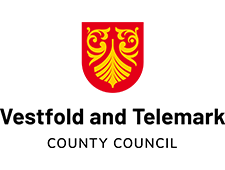
Vestfold and Telemark County Council (Norwegian: Vestfold og Telemark Fylkeskommune) is a Norwegian public elected body that is responsible for certain public administrative and service tasks within a county/region. One of the main responsibilities of the county council are cultural heritage management. Section for Cultural Heritage (Norwegian: Kulturarv) is the supreme authority regarding CH issues within the county. Cultural Heritage Act, white papers and other state guidelines are the basis for our work. Aiming to rationalize public management in the CH-field, staff members are also carrying out research and development projects to expand knowledge and improve methodology. During the last decade geophysical methods, geoarchaeology, landscape archaeology, 3D documentation has been adapted and implemented within the section
WEBSITE: https://www.vtfk.no/
LOCATION: Svend Foynsgt. 9
3126 Tønsberg
ROLE: End user and stakeholder.
Facilitate, coordinate and organize fieldwork and data collection from Norwegian demo site.
Testing, calibration and quality control of end product.
RELEVANT PROJECTS:
The Vestfold Project, initiated in 2010 by the Vestfold County Council, the Ludwig Boltzmann Institute for Archaeological Prospection and Virtual Archaeology and the Norwegian Institute for Cultural Heritage Research, focused on the investigation of Norway’s most important Viking Age landscapes including the ship burials at Oseberg and Gokstad as well as the royal burial site of Borre by using large-scale, high-resolution geophysical prospection as a novel way of investigation cultural heritage in a non-destructive way. Within the project, Vestfold County Council acted as stakeholder, contributed financially and in-kind and ensured the smooth conduction of the project on-site, in particular regarding the required infrastructure and expertise in local cultural heritage remains. Its role also comprised that of an end-user by testing the effectiveness and feasibility of non-invasive methods, with the intention of implementing them the national heritage management routines– a process that is still on-going today.
The Borre Monitoring Project started in 2016 and investigates seasonal changes on high-resolution ground penetrating radar (GPR) data. It was initiated as a direct consequence of results obtained through application of non-invasive methods in heritage management and aims to establish the most suitable conditions for the use of high-resolution GPR with respect to the prevailing environmental settings (soils, sediments, geology) and seasonal changes (precipitation, temperature) at the royal burial site of Borre. The approach includes systematic monthly GPR measurements of test areas for the duration of 14 months. Simultaneously, ground conditions are monitored for diagnostic elements including water content, electrical conductivity and temperature. Based on these data sets, the project will provide insights into how seasonally changing ground conditions are influencing the outcome of GPR surveys and why a thorough understanding of the processes involved is significant for the successful use of non-invasive prospection techniques in heritage management.